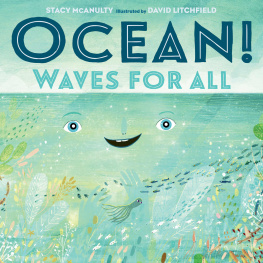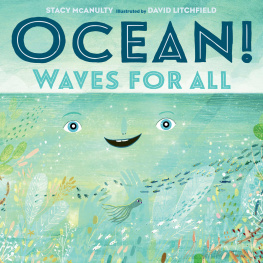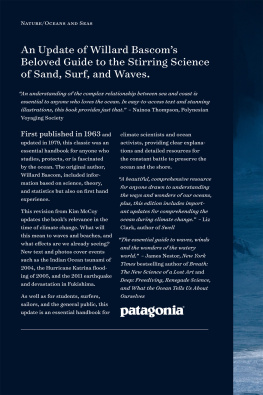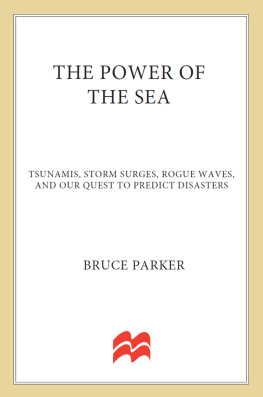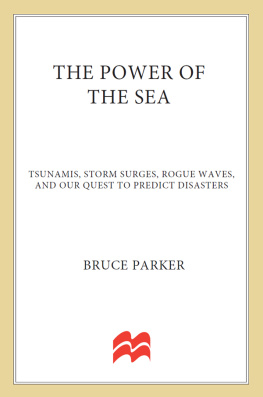The Science of Ocean Waves
The Science of Ocean Waves
Ripples, Tsunamis, and Stormy Seas
J. B. Zirker

2013 Johns Hopkins University Press
All rights reserved. Published 2013
Printed in the United States of America on acid-free paper
9 8 7 6 5 4 3 2 1
Johns Hopkins University Press
2715 North Charles Street
Baltimore, Maryland 21218-4363
www.press.jhu.edu
Library of Congress Cataloging-in-Publication Data
Zirker, Jack B.
The science of ocean waves : ripples, tsunamis, and stormy
seas / J. B. Zirker.
pages ; cm
Includes index.
ISBN 978-1-4214-1078-4 (hardcover : alk. paper)ISBN
978-1-4214-1079-1 (electronic)ISBN 1-4214-1078-8 (hard
cover : alk. paper)ISBN 1-4214-1079-6 (electronic)
1. Ocean waves. 2. Tsunamis. I. Title.
GC211.2.Z57 2013
551.463dc23
2012051092
A catalog record for this book is available from the British Library.
Special discounts are available for bulk purchases of this book. For more information, please contact Special Sales at 410-516-6936 or specialsales@press.jhu.edu.
Johns Hopkins University Press uses environmentally friendly book materials, including recycled text paper that is composed of at least 30 percent post-consumer waste, whenever possible.
To Frances Cleveland,
whose critical judgment
helped to make this a better book
Preface
Some of my best memories of Hawaii are of watching the surfers at the Banzai Pipeline, on the north shore of Oahu. In the months between November and January, waves 10 meters (m) high or more roll in majestically, curl, and break with awesome power. These waves draw a dedicated band of top-flight surfers, who come to compete or just to test their skills.
But come back during a gale and see the power of the ocean when it is fully aroused by strong winds. Then the surf is really spectacular, with breakers that crash with a sonic boom and flood up the beach, carrying everything before them. In a hurricane, it is not worth your life to remain too near the shore.
Powerful ocean waves fascinate the public, and they have made a lot of news lately. We all remember the terrible loss of life and property that Hurricane Katrina caused in 2005. Much of the damage on the Gulf Coast was caused by battering waves that rode up a storm surge to a height of 9 m.
Then there was the tsunami launched by the great Sumatran earthquake in December 2004. At Aceh, near the epicenter, a wave of 30m (98ft) crashed onshore and obliterated the town. This impulsive wave crossed the Indian Ocean and killed over 200,000 people in 14 countries.
But the great tsunami that crushed the shore of Japan in March 2011 and inundated the Fukushima nuclear power plant was in some ways the scariest of recent events. The combination of a magnitude 9.0 earthquake, a 10-m tsunami, and the prospect of a core meltdown was a scenario usually seen only in science fiction.
Perhaps the most awesome waves are the so-called rogues or freaks that can rise up out of a moderate sea to heights of 20m or more. In 1942, for example, the giant passenger ship Queen Mary was carrying 16,000 troops to England. The ship was hit by a 28-m-high rogue wave that rolled the huge liner to an angle of 52 degrees. A few degrees more might have capsized the vessel. Such freak waves were thought to be extremely rare events, but radar-equipped satellites have since disproved that comfortable assumption.

Surfing at the north shore of Oahu. (Photo 13438619, dreamstime.com.)
Most ships lost at sea are wrecked by ordinary storm waves, however. The North Atlantic in winter is notorious for 10-m seas that persist for days. In the Drake Passage, between South America and Antarctica, waves commonly reach heights of 10m and more, bedeviling the ships that try to round Cape Horn.
Powerful waves like these pose a real threat to shipping, and the maritime nations of the world have organized to cope with them. First and foremost they have sponsored research programs aimed at improving wave forecasting methods. Several forecasting centers now produce hourly or daily maps of wave heights to guide mariners at sea. In addition, satellite radars are deployed to monitor storm conditions.
In this book well look at all sorts of topics having to do with waves. I begin by introducing the properties of waves (without equations) and the physics that control them (blustery wind generates ocean waves, how storm waves propagate, and how weak waves differ from stronger waves.
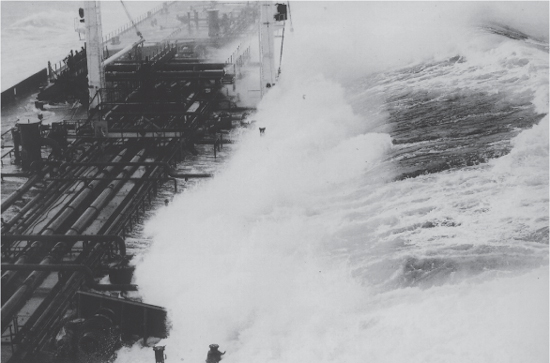
Rogue wave hitting oil tanker Overseas Chicago, headed south from Valdez, Alaska, 1993. The ship was running in about 25-foot seas when the 60-foot wave struck it broadside on the starboard side. Photo by Captain Roger Wilson. (Courtesy of National Oceanic and Atmospheric Administration/Department of Commerce)
In recalls the progress oceanographers have made in forecasting wave heights and directions. Well see how radar works and how satellites are used to monitor great storms.
In the second half of the book, I discuss the beauty and power of breaking waves, the origins of those unpredictable rogue waves, the devastating tsunamis, and the ocean-wide El Nio phenomenon. The ocean tides are less dramatic than storms, but they are essential to the maritime industry. Well recall how tides are generated and how daily forecasts are made (, well look into the development of clever machines that could capture the energy of ocean waves and tides and produce electricity on an industrial scale.
Well go beyond mere anecdotes and try to understand as much as possible about wave physics without using mathematics. That means well have to review some basic properties of waves and the way winds push waves to great heights. Well begin with the simple stuff and build from there. Some topics are more difficult than others, so take your time reading these parts.
It will be an interesting trip, so hop aboard!
The Science of Ocean Waves
CHAPTER ONE
A Walk along the Beach
We can learn a lot about ocean waves just by looking. So before we become immersed in the intricacies of waves, lets just stroll along the shore and comment on what we see. Its a nice, sunny day, without much wind: a perfect day for the beach.
As we look out to sea, we see a long train of parallel, equally spaced waves approaching the shore, as is shown in . These waves were probably generated by the winds of the storm that passed far offshore a couple of days ago. The sea is still recovering from the storm.
But what exactly are we looking at? The sea is not pouring steadily up the beach like a broad river. If it were, wed be drowned. Instead, as each wave collapses on the beach, the water sloshes back into the sea. So we realize that these waves are part of a moving pattern of humps and hollows that glides over the surface of the sea. This regular pattern is called a swell. Swell waves are usually low, only about a meter high or so, and have rounded tops. All the crests we see are nearly parallel to the shore, have about the same height, and extend sideways at least six or seven times the distance between crests.
Id guess that in this swell, the distance between the crest and the trough (which is called the height of the wave) is about 1 m. We could estimate the distance between wave crests (which is appropriately called the wavelength) as about 10m, or 33 feet. And if we timed the interval between crests as they pass that buoy out there, wed find the period: about 5 seconds for these waves. Divide one number by the other and we get the speed of the wave, about 2 m/s, or 7km/h, or about 4mphthe pace of a fast walk.
Next page



